ข้อมูลพื้นฐาน
 ฟิลิปปินส์
ฟิลิปปินส์
คะแนน
 ฟิลิปปินส์
|
5-10ปี
|
ฟิลิปปินส์
|
5-10ปี
| https://www.pnb.com.ph/
Website
ดัชนีคะแนน
อิทธิพล
A
ดัชนีอิทธิพล NO.1
 ฟิลิปปินส์ 8.02
ฟิลิปปินส์ 8.02 ใบอนุญาต
ใบอนุญาตไม่มีข้อมูลการกำกับดูแลที่แน่ชัด โปรดใช้วิจารณญาณในการตัดสินใจ และระวังความเสี่ยงที่อาจจะเกิดขึ้น
 ฟิลิปปินส์
ฟิลิปปินส์ pnb.com.ph
pnb.com.ph สหรัฐอเมริกา
สหรัฐอเมริกา



| PNB สรุปรีวิว | |
| ก่อตั้ง | 1916 |
| ประเทศ/ภูมิภาคที่ลงทะเบียน | ฟิลิปปินส์ |
| กฎระเบียบ | ไม่มีกฎระเบียบ |
| ผลิตภัณฑ์และบริการ | การเงินส่วนบุคคลและธุรกิจ, สินเชื่อและจำนอง, การโอนเงิน, ประกัน, การลงทุน, โบรกเกอร์หุ้น, การทำธุรกรรมทางโทรศัพท์มือถือและออนไลน์ |
| บัญชีสาธิต | / |
| เลเวอเรจ | / |
| การกระจาย | / |
| แพลตฟอร์มการซื้อขาย | PNB แอปพลิเคชันดิจิตอล |
| ยอดฝากขั้นต่ำ | PHP 3,000 (สำหรับบัญชีฝากออมพื้นฐาน) |
| ฝ่ายบริการลูกค้า | โทรศัพท์หลัก: (+632) 8526 3131 |
| โทรศัพท์ธนาคาร: (+632) 8573-8888 | |
| อีเมล: customercare@pnb.com.ph | |
| โซเชียลมีเดีย: Facebook, X, Instagram, YouTube, LinkedIn | |
Philippine National Bank (PNB) เป็นธนาคารพาณิชย์เอกชนที่ยาวนานและใหญ่ที่สุดในฟิลิปปินส์ ซึ่งเปิดให้บริการตั้งแต่ปี 1916 ปัจจุบันไม่ได้รับการควบคุมโดยหน่วยงานทางการเงินใดๆ ทั้งในสหรัฐอเมริกาหรือต่างประเทศ แต่มีการให้บริการทางการเงินแบบดิจิทัลและแบบดั้งเดิมทั้งหมดให้กับลูกค้าในสหรัฐอเมริกาและต่างประเทศผ่านเครือข่ายสาขาและตู้เอทีเอ็มขนาดใหญ่ของตน

| ข้อดี | ข้อเสีย |
| ประวัติการให้บริการทางการเงินยาวนานตั้งแต่ปี 1916 | ไม่ได้รับการควบคุม |
| มีเครือข่ายสาขาทั้งในประเทศและต่างประเทศอย่างแพร่หลาย | โครงสร้างค่าธรรมเนียมที่ซับซ้อน |
| มีการให้บริการทางการเงินในหลากหลายประเภท | |
| ช่องทางการติดต่อหลากหลาย |
PNB ไม่ได้รับการควบคุม โดยหน่วยงานทางการเงินใดๆ ในฟิลิปปินส์ รวมถึง คณะกรรมการกำกับหลักทรัพย์และแลกเปลี่ยน (SEC) และ บังกโก เซ็นทรัล ง ปีลิปินัส (BSP) อีกด้วย นอกจากนี้ มันไม่ได้รับการควบคุมโดยหน่วยงานกำกับดูแลทางการเงินระดับนานาชาติใดๆ เช่น FCA (สหราชอาณาจักร), ASIC (ออสเตรเลีย), หรือ CySEC (ไซปรัส)
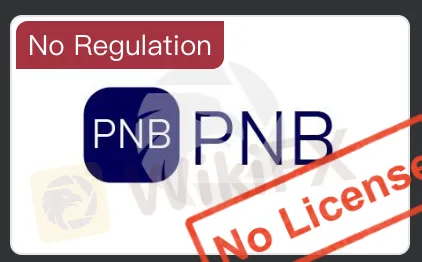
PNB ให้บริการทางการเงินที่เป็นทางการและนวัตกรรม รวมถึงการให้บริการธนาคารส่วนบุคคล ธนาคารธุรกิจ การโอนเงิน การบริหารทรัพย์สิน การให้กู้ยืม ประกัน และตัวเลือกการลงทุน มีเครือข่ายสาขาในประเทศและต่างประเทศที่ใหญ่ที่สุดของธนาคารฟิลิปปินส์ใดๆ ให้บริการลูกค้าท้องถิ่นและลูกค้าฟิลิปปินส์ทั่วโลก
| ผลิตภัณฑ์ / บริการ | รองรับ |
| การเงินส่วนบุคคลและธุรกิจ | ✔ |
| สินเชื่อและสินเชื่อจดจำ (เช่น OPHL) | ✔ |
| บริการโอนเงิน | ✔ |
| ประกัน (ชีวิตและอื่นๆ) | ✔ |
| การลงทุนและบริการทรัสต์ | ✔ |
| โบรกเกอร์หลักทรัพย์ | ✔ |
| การธนาคารออนไลน์และผ่านมือถือ | ✔ |
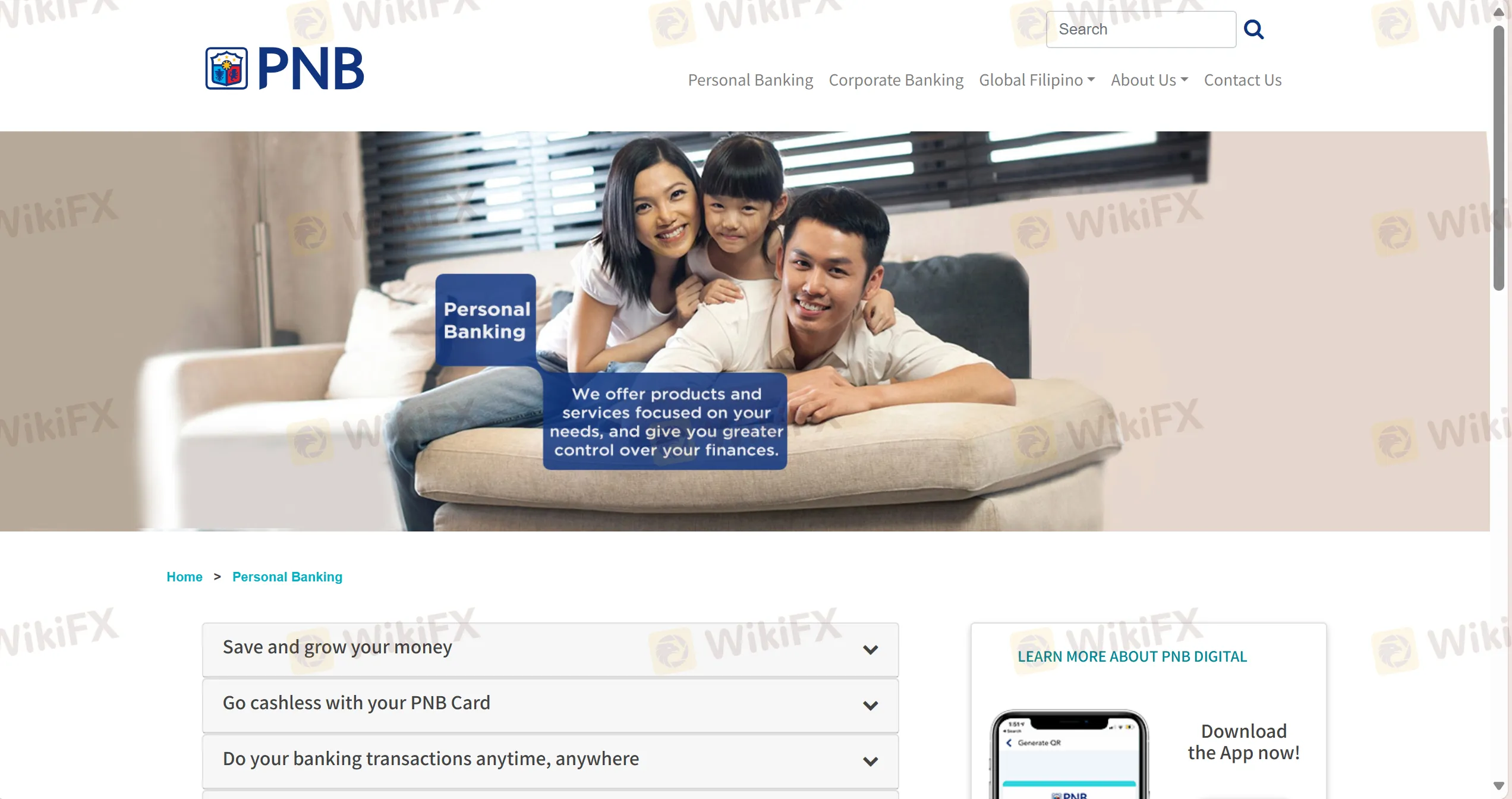
| ประเภทบัญชี | วัตถุประสงค์ / คุณสมบัติ | เหมาะสำหรับ |
| บัญชีเงินฝากออมทรัพย์ | บัญชีฝากเงินพื้นฐาน; ยอดเงินฝากเริ่มต้นตั้งแต่ PHP 3,000 | ผู้ออมทุกวัน |
| บัญชีเช็ค | มาพร้อมสมุดเช็ค; สำหรับการชำระเงินและเข้าถึงเงินสะสมได้อย่างง่าย | บุคคล/ธุรกิจที่ต้องการความยืดหยุ่นในการชำระเงิน |
| เงินฝากเปิดเวลา | เงินฝากเปิดเวลาที่มีดอกเบี้ย | ผู้ที่ต้องการการเติบโตของเงินฝากที่ปลอดภัย |
| สกุลเงินต่างประเทศ | สำหรับเก็บสกุลเงินต่างประเทศอย่างปลอดภัย | บุคคลที่มีความต้องการในฟอเร็กซ์หรือการทำธุรกรรมต่างประเทศ |
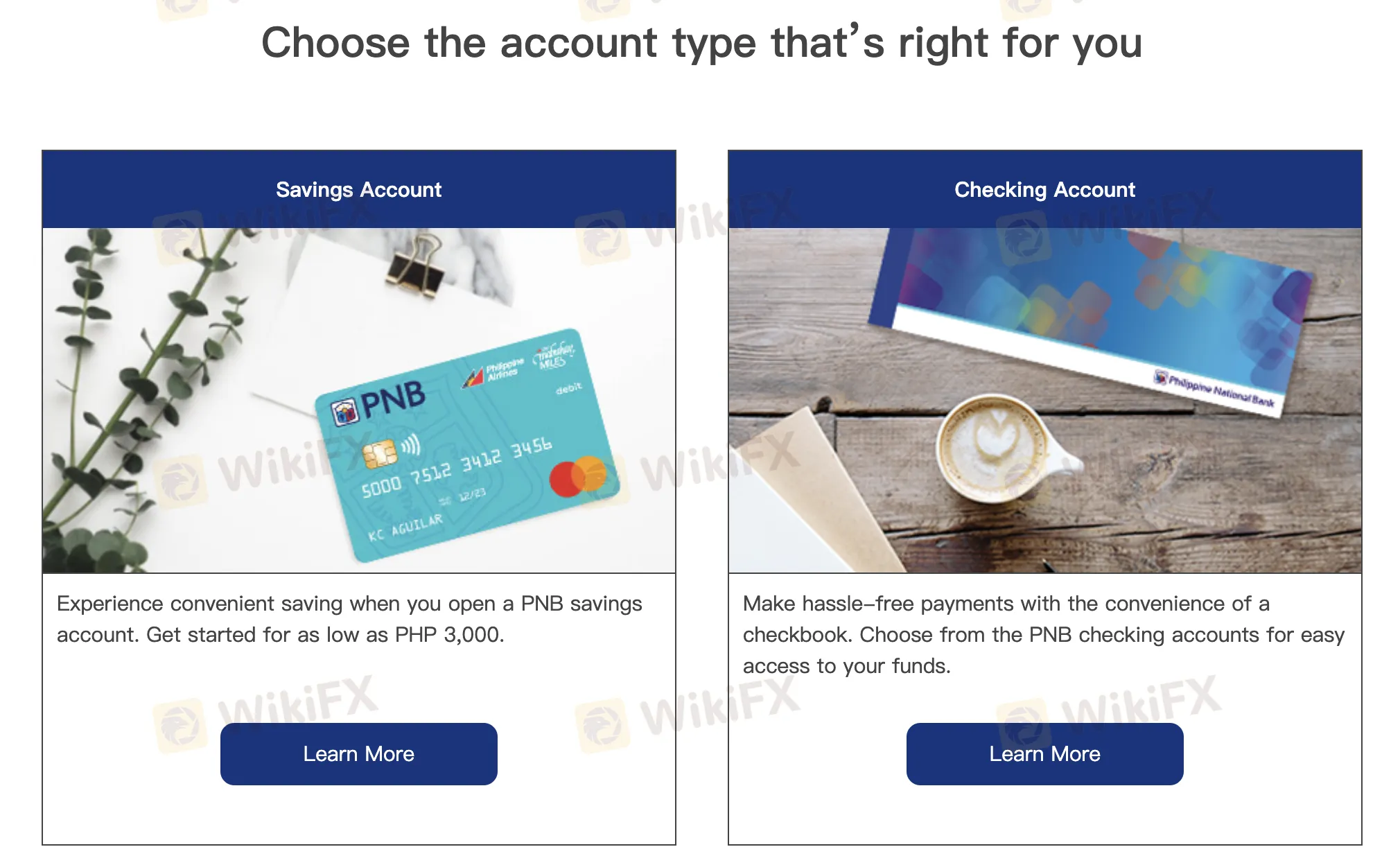
เมื่อเปรียบเทียบกับธนาคารอื่น ๆ PNB คิดค่าธรรมเนียมในระดับปานกลางถึงสูง โดยเฉพาะสำหรับธุรกรรมระหว่างสาขาและกับบุคคลจากประเทศอื่น ๆ ภายในเครือข่ายของมัน บางบริการ เช่น เช็คยอดเงินและใช้ ATM ฟรี อย่างไรก็ตาม มีบริการอื่น ๆ หลายรายการ โดยเฉพาะอย่างยิ่งสำหรับบริการที่เกี่ยวข้องกับสาขาในภูมิภาคที่แตกต่างกัน บนเกาะอื่น ๆ หรือกับสกุลเงินที่แตกต่างกัน มีค่าธรรมเนียมที่แตกต่างกัน
| หมวดหมู่ค่าธรรมเนียม | คำอธิบาย | ค่าธรรมเนียม |
| ฝากเงินระหว่างสาขา | ในภูมิภาคเดียวกัน: ฟรีภูมิภาคต่างกัน: ₱50/₱100K หรือมากกว่า | ₱50 ขั้นต่ำ, ₱50 ต่อ ₱100K |
| ฝากเช็คระหว่างสาขา | ปกติ ↔ สาขาเกาะ | ₱100 |
| USD ฝากเงิน/เช็ค | ทุกสาขา | ₱100 |
| ถอนเงินระหว่างสาขา (PHP) | ปกติ ↔ สาขาเกาะ | ₱200 |
| ถอนเงิน/แลกเงิน USD | ทุกสาขา | ₱200 |
| ATM (ในประเทศ) | ATM PNB: ฟรีธนาคารอื่น: ถอนเงิน ₱15, สอบถามยอด ₱2 | ₱2–₱15 |
| ATM (ระหว่างประเทศ) | ถอนเงิน: ₱150–₱250สอบถามยอด: ₱75 | ₱75–₱250 |
| โอนเงินดิจิตอล (ร้านค้า) | InstaPay / PESONet | ₱20 ต่อธุรกรรม |
| โอนเงินดิจิตอล PNB ไปยัง PNB | 3 ครั้งแรกฟรี; ครั้งถัดไป ₱10 ต่อครั้ง | ₱0–₱10 |
| บริการส่งเสริม | ใบถอนเงิน: ₱50การสั่งซื้อสมุดเช็ค: ₱250–₱500ใบรับรองธนาคาร: ₱200 | แตกต่างกัน |
| การโอนเงิน USD ขาเข้า | ค่าบริการ + DST | $5–$8 |
| ค่าเงินคงเหลือที่ไม่ใช้ | หลังจากไม่ใช้งานเกิน 5 ปี | ₱30 / $0.50 (บัญชีที่เลือก) |
| ปิดบัญชีก่อนกำหนด (≤30 วัน) | บัญชี PHP: ₱500บัญชี USD: $10 | ₱500 / $10+ |
| ค่าปรับคงเหลือ | เปโซ: ₱350–₂500USD: $10–$20สกุลเงินอื่น ๆ แตกต่าง | ₱350+ / $10+ |
| ค่าธรรมเนียมอื่น ๆ | คำขอ SOA, การโอนเงิน, ตั๋วของบังคับ, เช่าตู้เซฟ, ฯลฯ | แตกต่างตามบริการ |
| แพลตฟอร์มการซื้อขาย | รองรับ | อุปกรณ์ที่ใช้ได้ | เหมาะสำหรับ |
| แอปพลิเคชันดิจิตอล PNB | ✔ | Android, iOS | / |
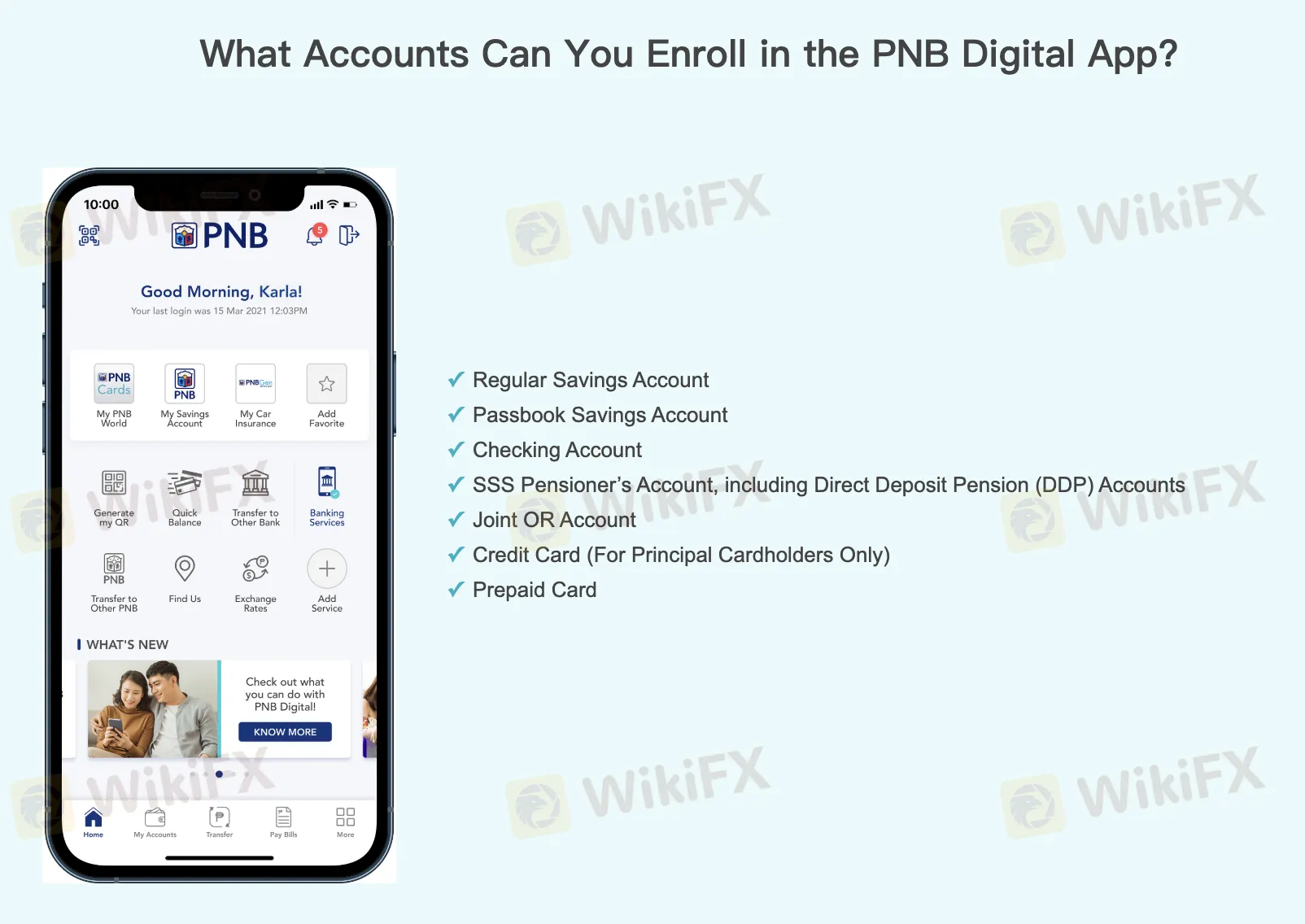

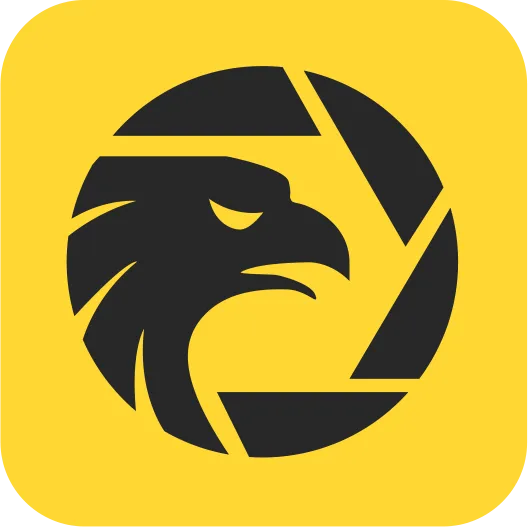
From my experience and careful review of the available information about PNB, it’s important to clarify that PNB operates primarily as a traditional and digital bank, not a specialized forex broker. Although they offer foreign currency accounts and some investment services, I could not find any detailed evidence that they provide true ECN or raw spread forex trading accounts in the way that major online forex brokers do. This distinction matters because, in standard forex industry practice, ECN or raw spread accounts typically charge a commission per lot traded, separate from the spread. For PNB, there is simply no mention of a commission structure per lot or any dedicated forex trading fees that would apply to ECN or raw spread accounts. The bank’s fee structure is focused on banking operations, such as foreign currency withdrawals, remittance, and maintenance charges, but not specialized trading commissions. This absence of detailed trading commission information strongly suggests that PNB does not support direct retail forex trading through an ECN or raw spread model where commissions per lot would apply. For me, this lack of transparency and regulatory oversight, coupled with the absence of industry-standard trading account types, makes PNB unsuitable as a primary venue for serious forex trading. I exercise caution and would recommend seeking a regulated, specialized broker if ECN trading and clear commission terms are crucial to your trading strategy.



In my experience as a trader exploring financial institutions, the account types offered by PNB reflect its primary function as a traditional and digital bank, rather than a dedicated forex broker. Their account options—namely Savings, Checking, Time Deposit, and Foreign Currency Accounts—each cater to distinct financial needs. The Savings Account is best suited for everyday savers looking for basic deposit functionality with an initial deposit as low as PHP 3,000. Checking Accounts, on the other hand, provide a checkbook and added payment flexibility, which is useful for individuals or businesses that frequently write checks or handle regular payments. Time Deposit Accounts are targeted at those who prefer secure, fixed-term savings with a predetermined interest, an approach typically favored by conservative investors aiming for predictable returns. The Foreign Currency Account stands out for me as it is specifically designed for individuals with international transaction requirements or those who want to hold funds in currencies other than the Philippine Peso. It's important to note that while these accounts serve various customer segments, none are specialized trading or margin accounts commonly found with brokers. There is also no mention of leverage or spread structures, which, from a risk and suitability perspective, indicates these offerings are not designed for active forex speculation. For traders, understanding these distinctions is critical, as the account type fundamentally defines the scope of available products, related costs, and the risk profile. I always emphasize diligence, especially given PNB’s lack of regulatory oversight, which demands extra caution and thorough understanding before engaging in higher-risk financial activities.


Based on my own careful research and firsthand evaluation, PNB is not overseen by any recognized financial regulatory body, either within the Philippines or internationally. Despite its long history as a major bank in the Philippines and its broad suite of banking and financial services, there is no evidence of regulatory supervision by authorities such as the Bangko Sentral ng Pilipinas (BSP), Securities and Exchange Commission (SEC), or established global regulators like the FCA, ASIC, or CySEC. For me as a trader, the absence of regulatory oversight is a significant red flag, especially when considering any platform or institution for forex or investment activities. Regulation is critical because it provides a framework for transparency, accountability, and customer protections—elements I rely on when evaluating the trustworthiness and safety of any broker or financial entity. Without official regulation, clients carry additional risks, such as limited recourse in case of disputes or malpractices. In my experience, I stick with brokers that can clearly demonstrate active regulatory licenses, as this underpins not just legitimacy but also the fundamental safety of my capital.


Based on my experience as a forex trader, I always prioritize safety and due diligence when choosing financial institutions and handling withdrawals. With PNB, I approach the process with particular caution due to its lack of regulation by Philippine authorities and absence of international oversight. While PNB is an established bank offering a range of financial and investment services, there is no explicit, detailed information available in the background about the precise documentation requirements for processing an initial withdrawal, especially for those seeking to move funds internationally or through different currencies. Generally, for a withdrawal from a bank account (as opposed to a regulated forex brokerage account), I expect to provide standard bank documents. This typically includes a valid government-issued photo ID, possibly my account number, and sometimes the original passbook or checkbook if withdrawing over the counter. If the withdrawal is being made online through the PNB Digital App, I would ensure my account and contact information are up to date, and be prepared for additional security verification. Given the complex fee structure and potential regional branch requirements listed, I would also recommend confirming all the specifics directly with PNB customer service before attempting a withdrawal. This helps ensure there are no unexpected delays or additional requests. I never risk large sums without first clarifying withdrawal processes, especially with institutions that do not hold formal regulatory licenses. For me, cautious verification is essential to safeguard my capital.



กรุณาใส่...


 TOP
TOP 

Chrome
Chrome Extension
การสอบถามเกี่ยวกับกฎระเบียบของโบรกเกอร์ Forex ทั่วโลก
เรียกดูเว็บไซต์โบรกเกอร์ฟอเร็กซ์ ระบุโบรกเกอร์ที่ถูกกฎหมายและฉ้อโกงได้อย่างถูกต้อง

ติดตั้งตอนนี้